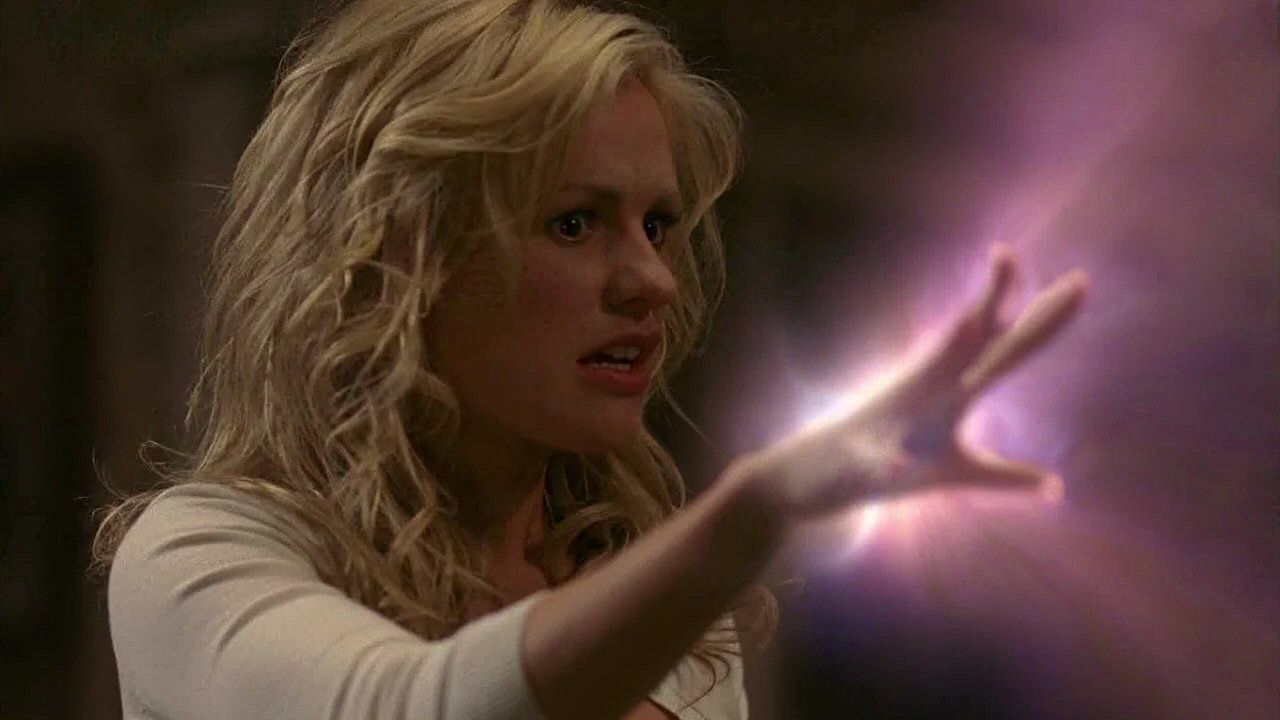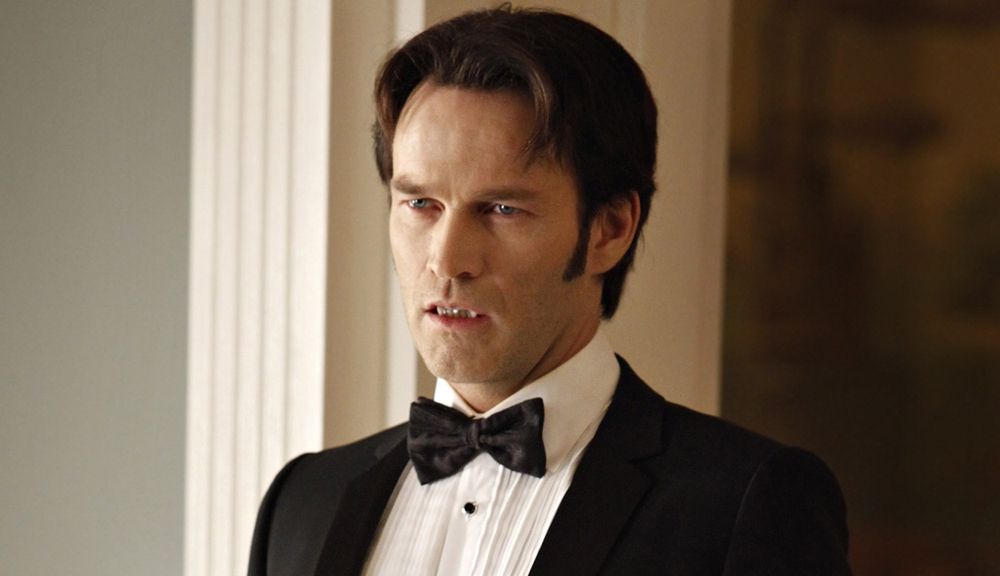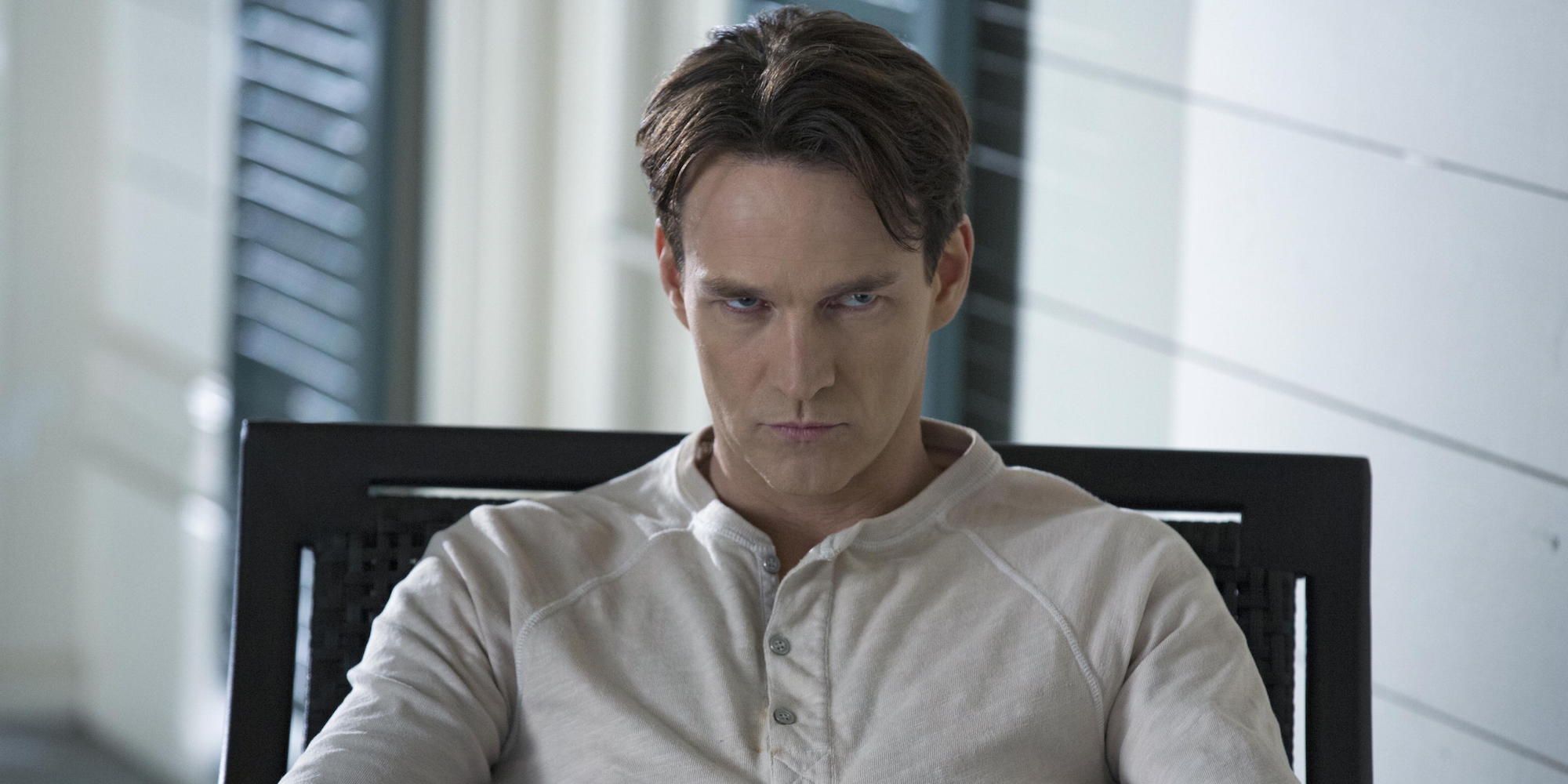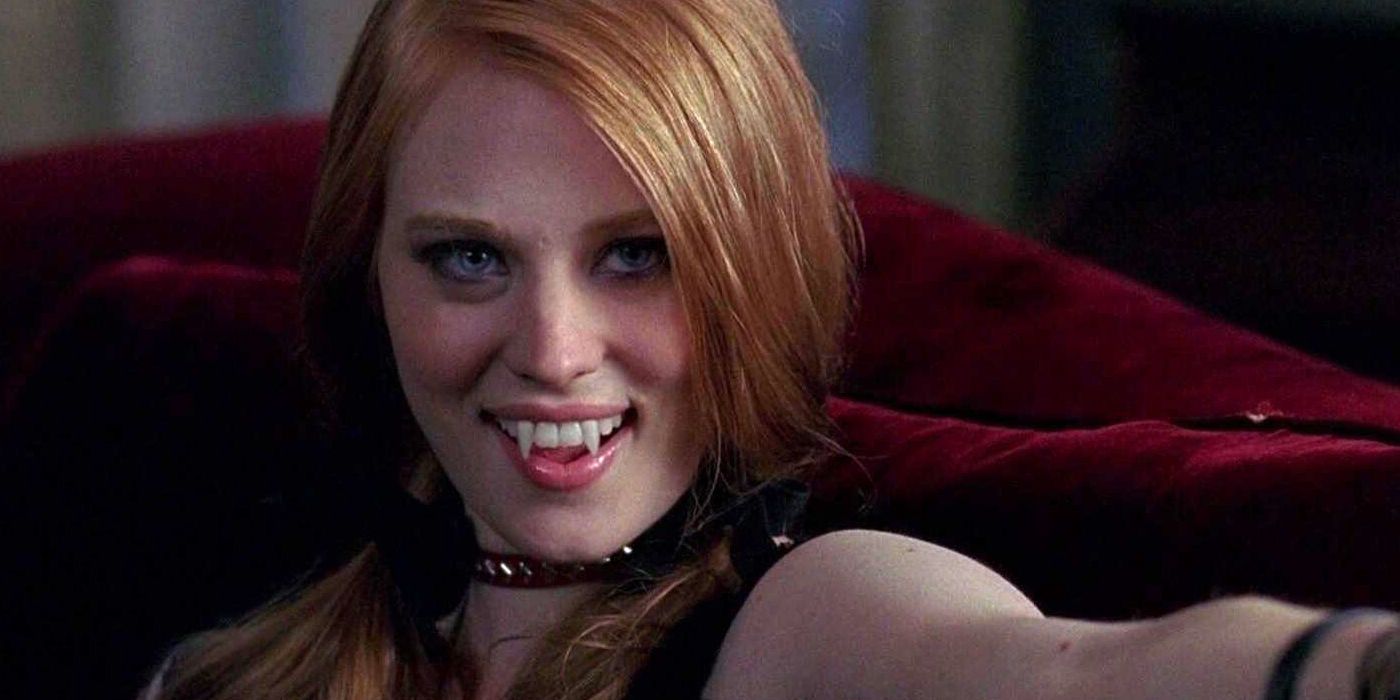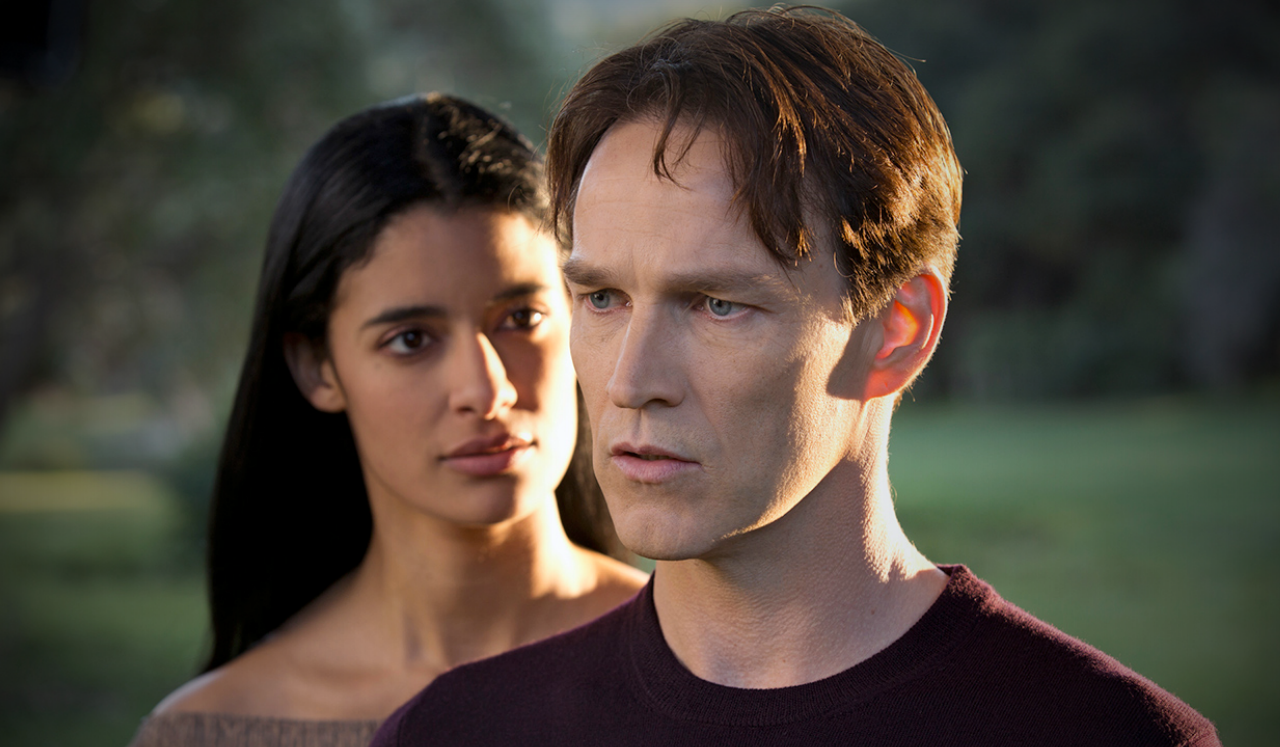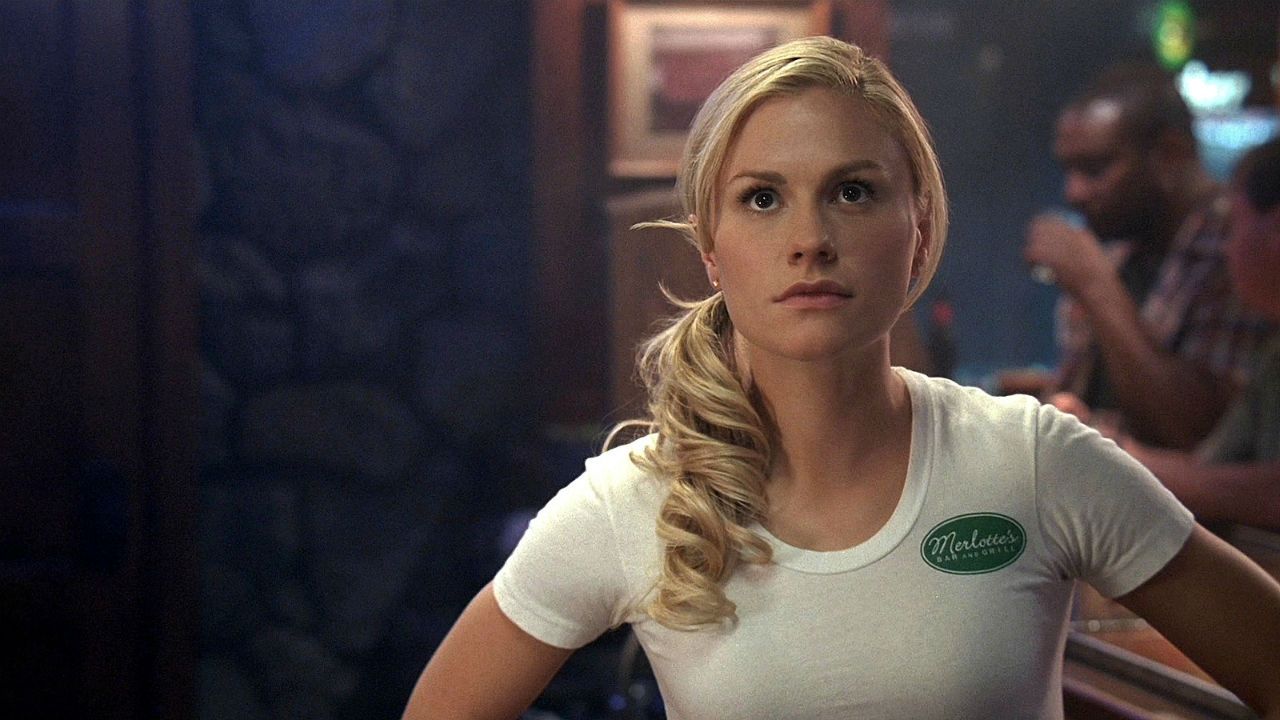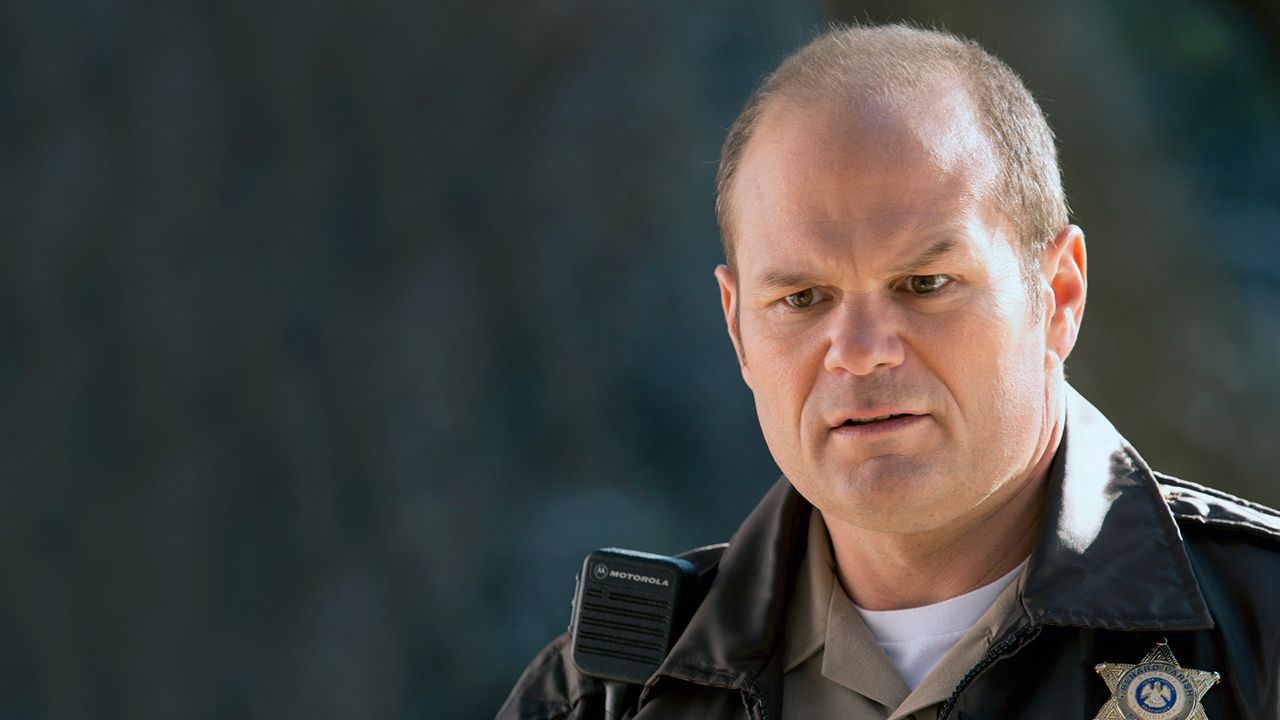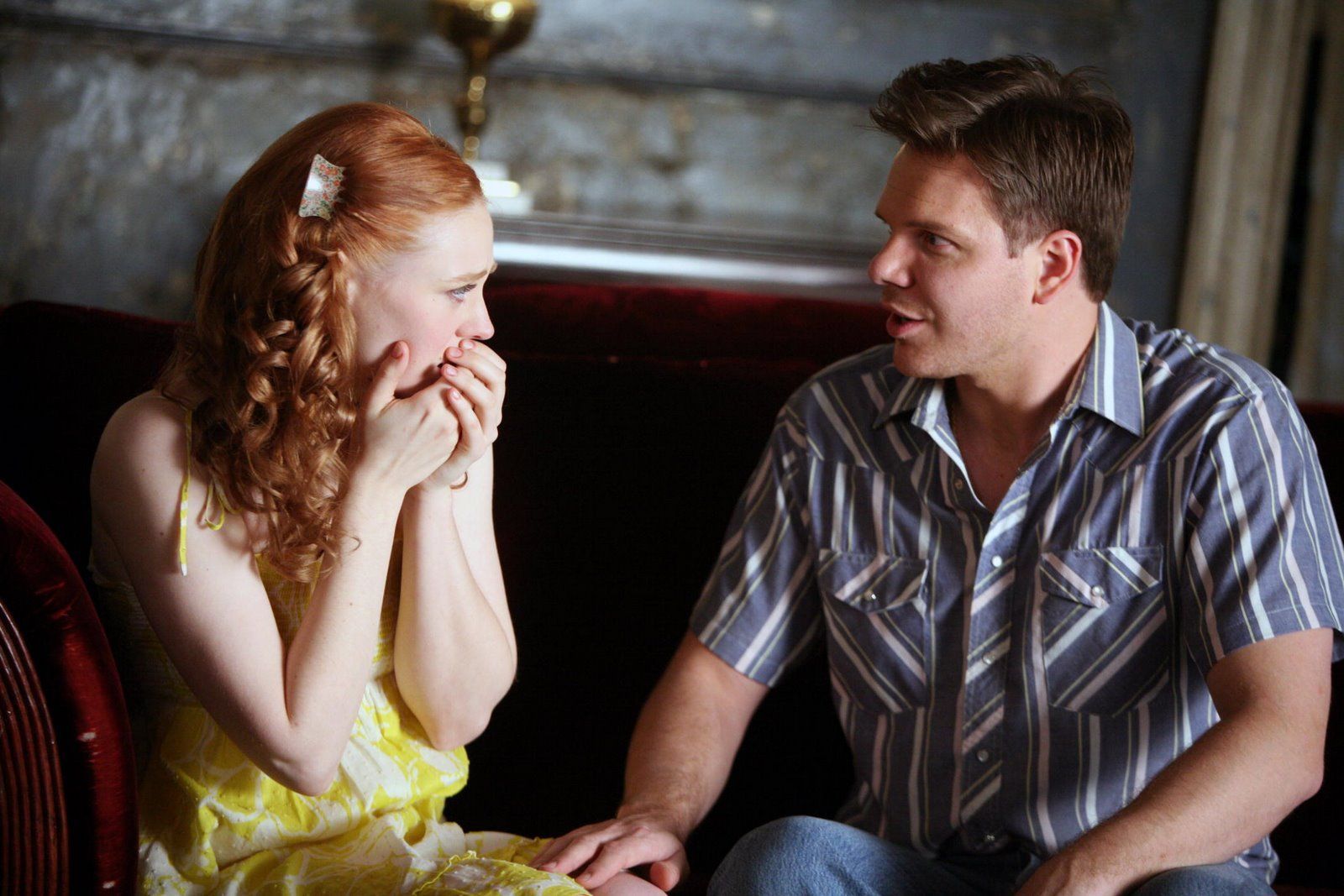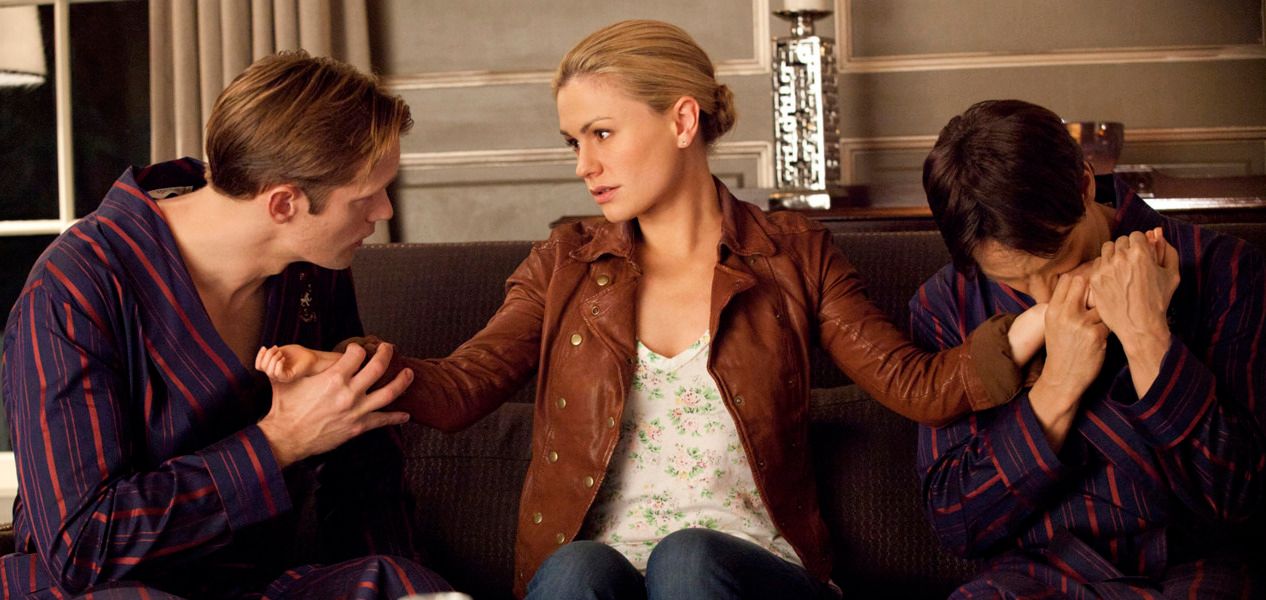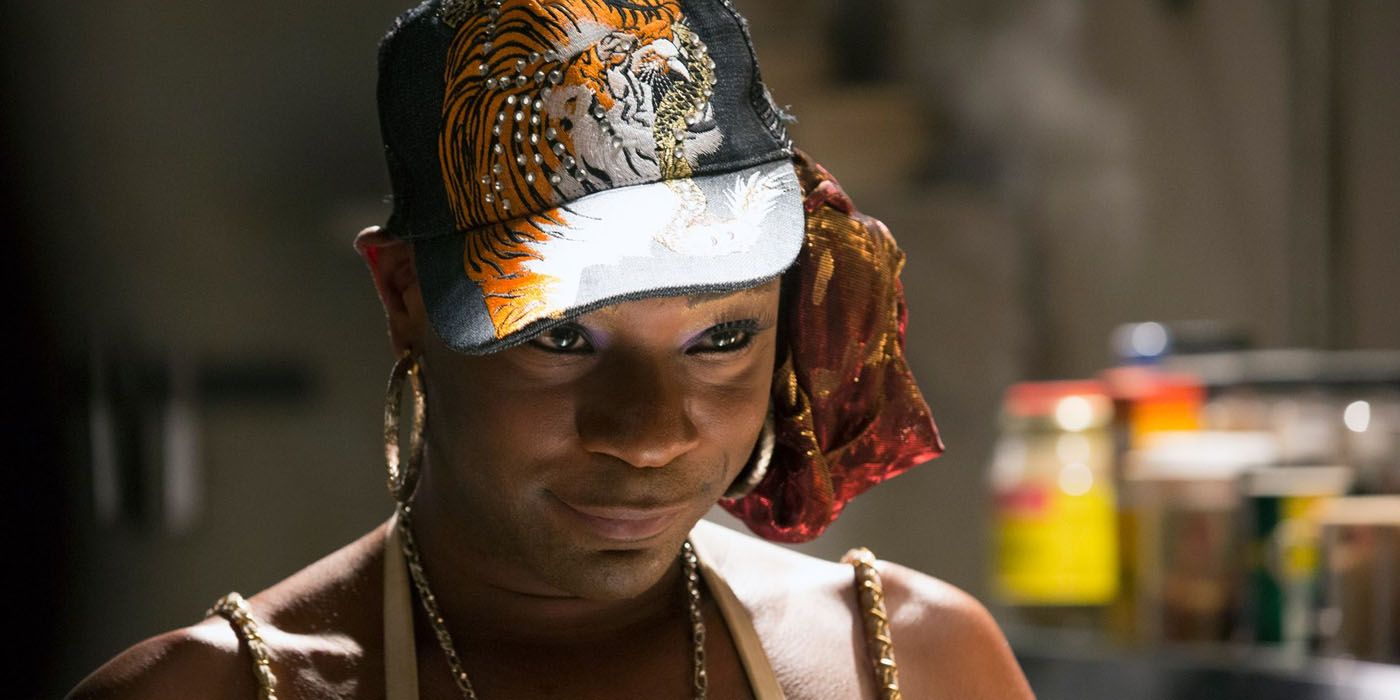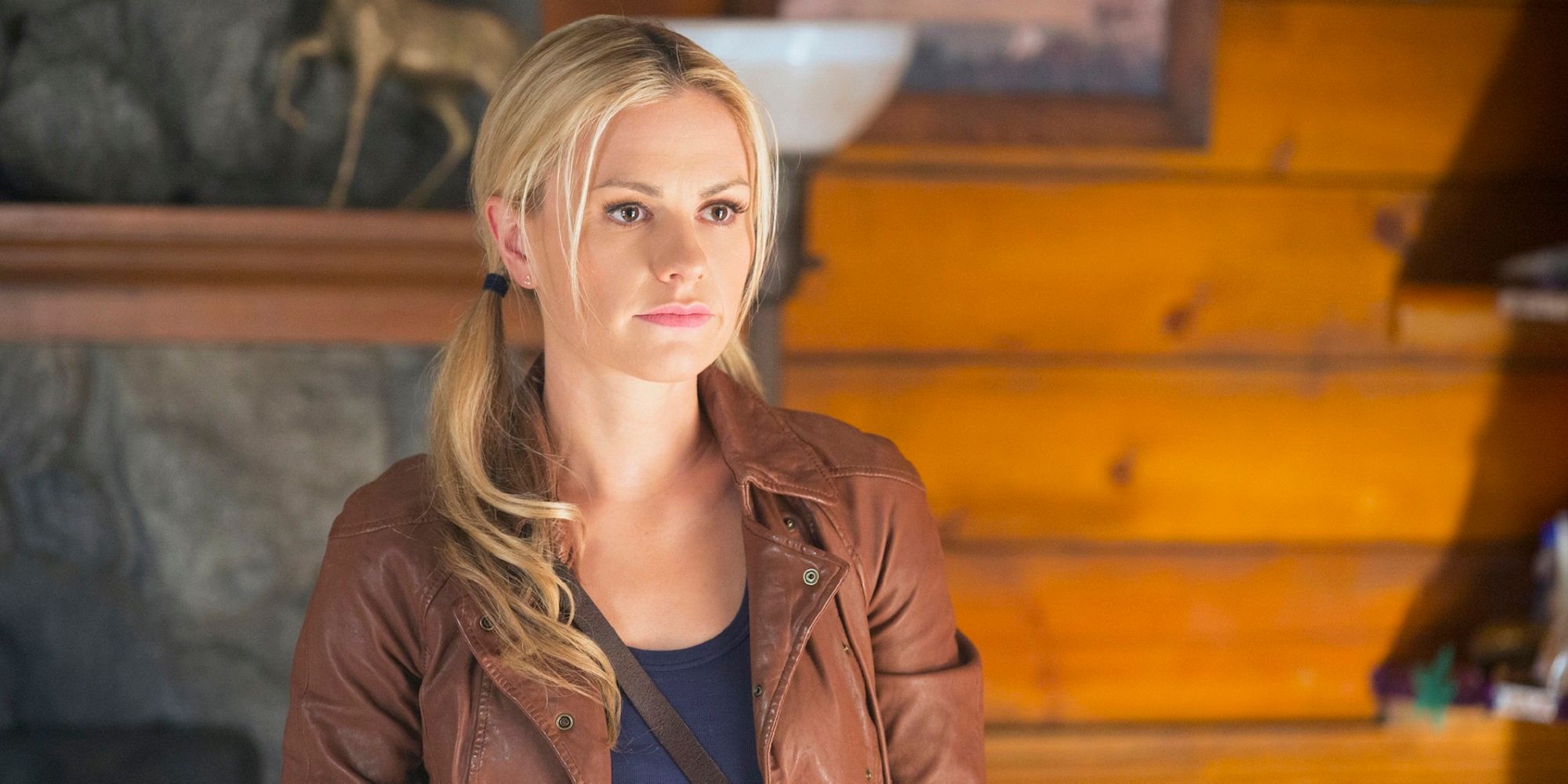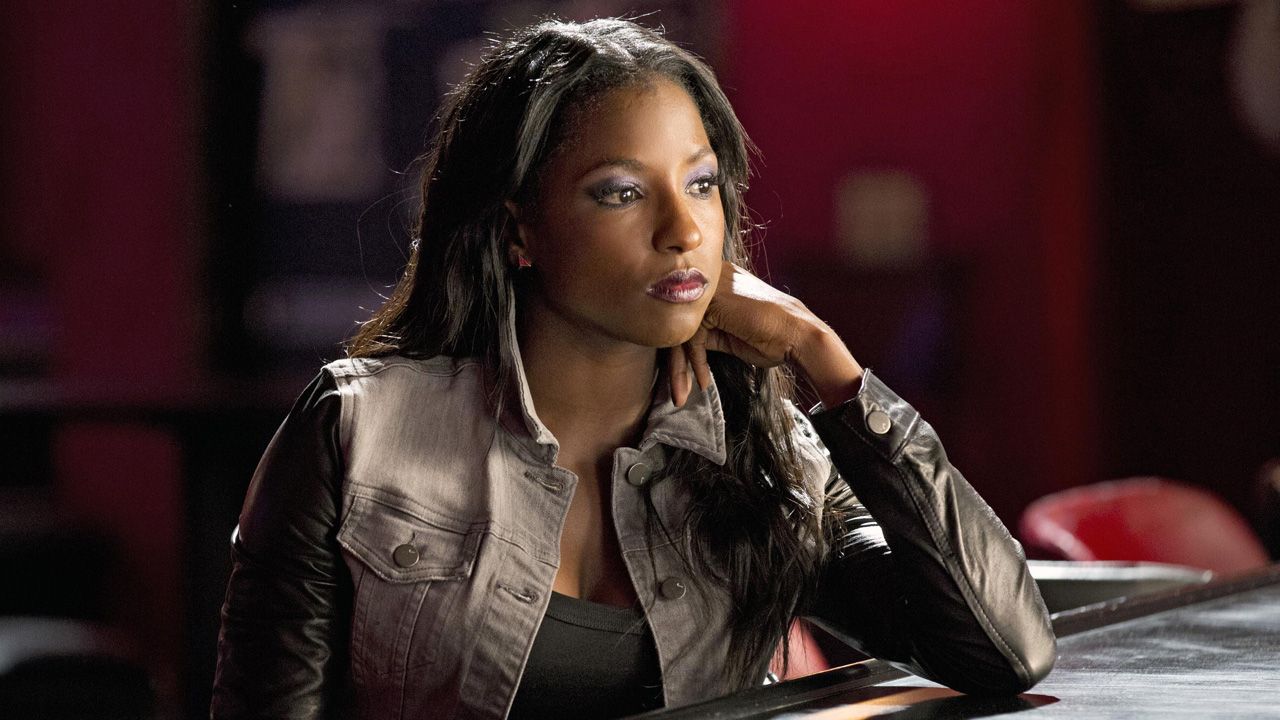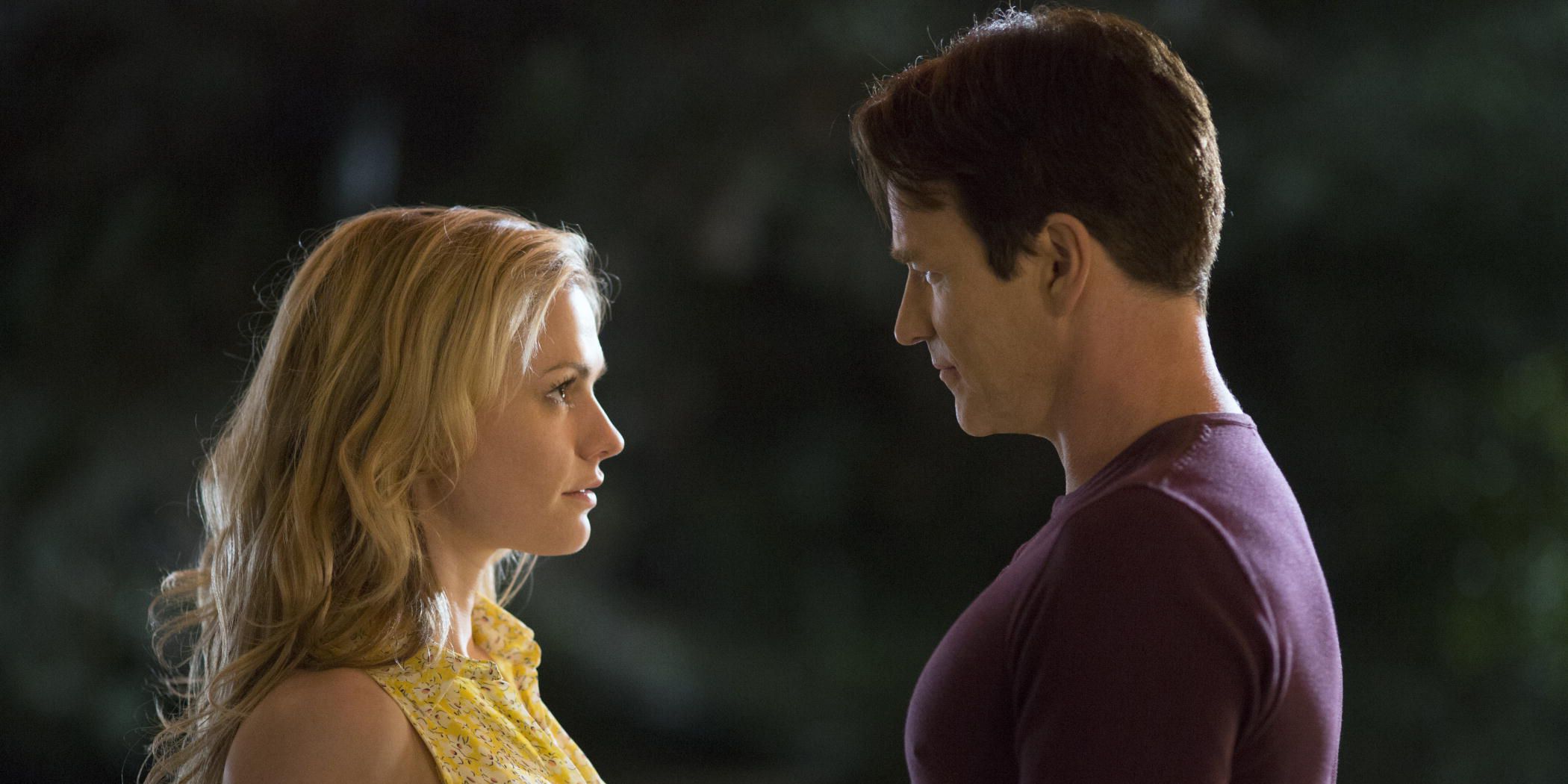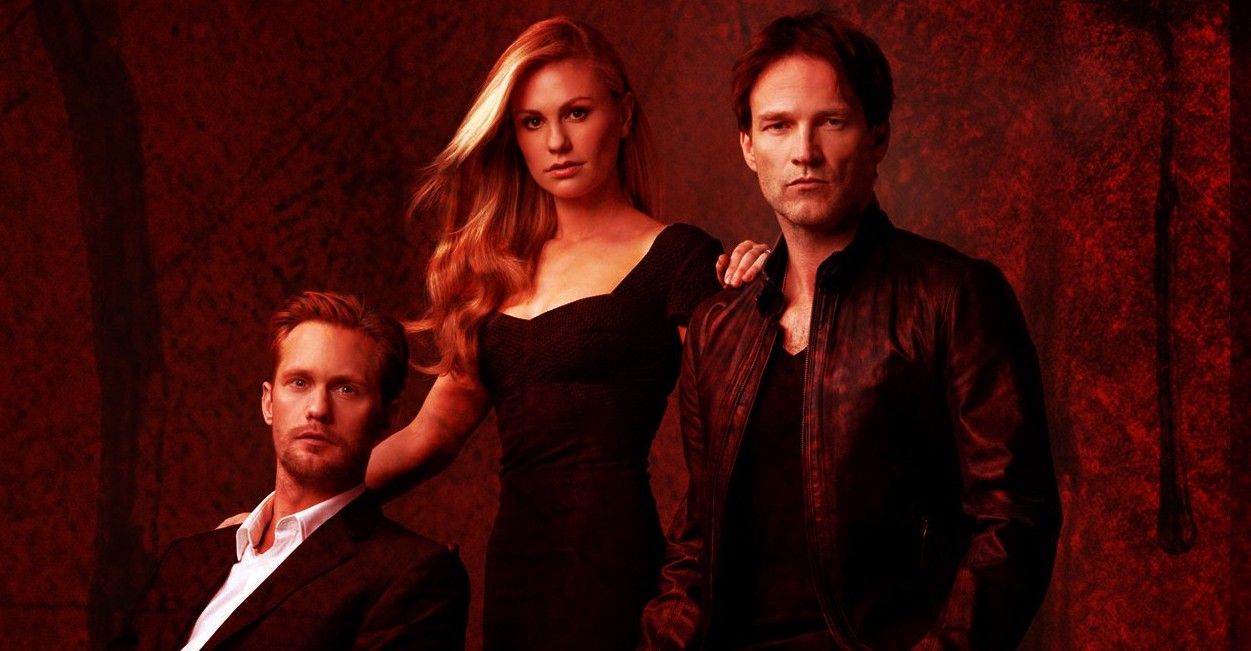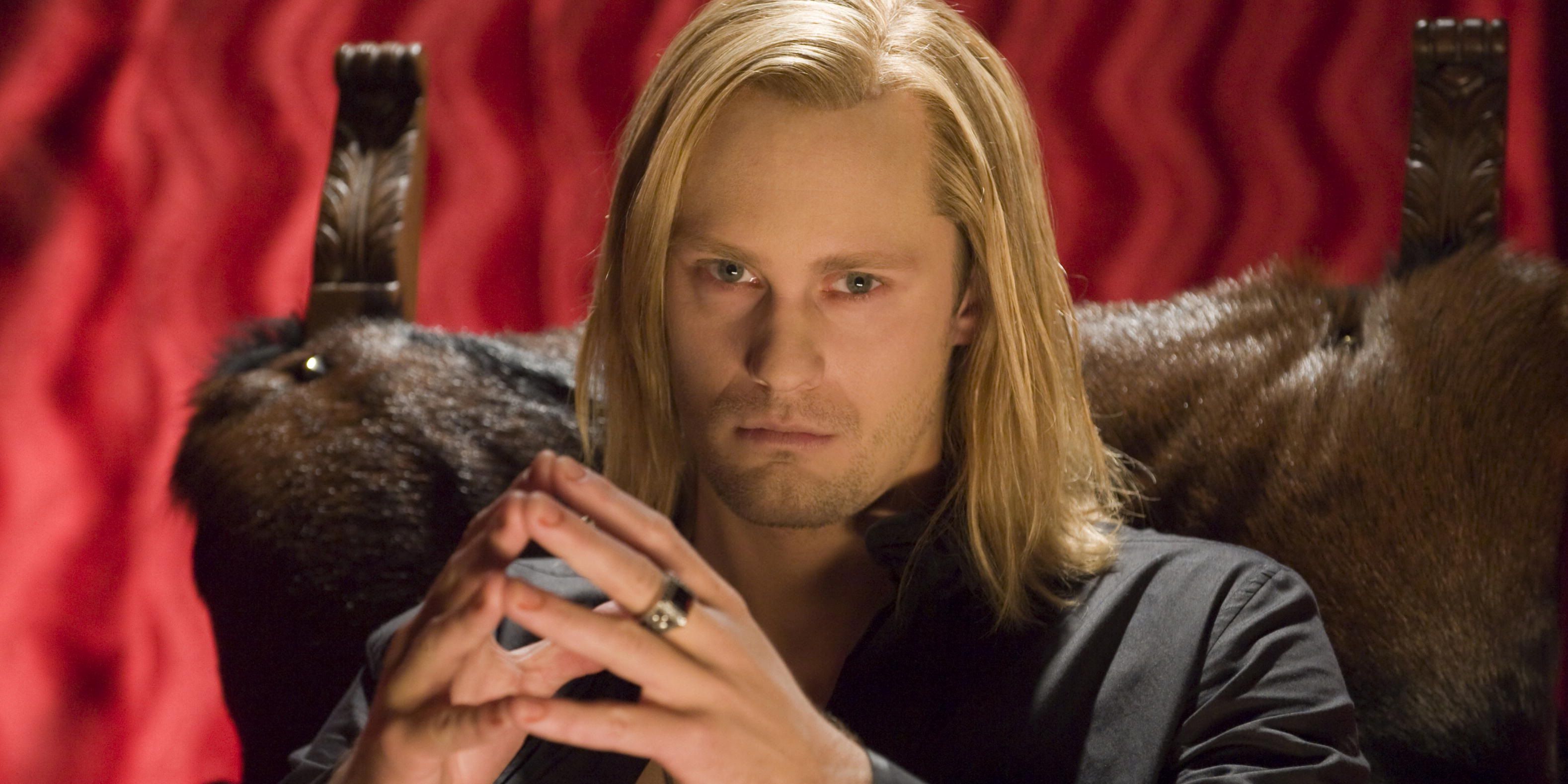Since premiering in 2008 on HBO, True Blood quickly became one of the most beloved – but also one of the most hated – television series of all time. The premise was simple: what would society look like if vampires lived among us? However, over time, other human-like creatures with special abilities were also introduced -- some to the benefit of the show, and others to the disapproval of the fans.
Be that as it may, True Blood was responsible for jumpstarting the careers of Stephen Moyer (who would later land the lead role on The Gifted), Sam Trammel (most recently seen on the NBC hit show This Is Us), Alexander Skarsgård (now known for Big Little Lies and The Legend of Tarzan), and Joe Manganiello (Magic Mike). Furthermore, the show marked yet another milestone in Anna Paquin’s career, who was already known for winning an Oscar at age 11 and for portraying Rogue in the original X-Men trilogy.
In the same vein of the 1994 film Interview with a Vampire, True Blood was all about bringing an adult take to the vampire genre, something that was particularly interesting to audiences who were sick of the Twilight franchise, which was still going at the time.
Over the course of seven years, this show was one of HBO’s most prominent TV series during, at times even reaching critical acclaim aside from its commercial appeal. With some hindsight, however, it is safe to say that True Blood lost itself along the way, which disappointed many fans.
These are 20 Things That Make No Sense About True Blood.
THE INTRODUCTION OF FAIRIES
True Blood was about vampires. Like many stories about vampires, it was expected that other supernatural abilities and creatures would be introduced eventually, such as werewolves, which are very common antagonists in vampire stories.
When True Blood was released, Twilight was making hundreds of millions of dollars capitalizing on the vampire versus werewolf plot device, which certainly enticed HBO to explore similar themes.
However, there is only so far that a show can go before audiences begin to question whether things are going off the rails. By the time that True Blood introduced fairies to the main storyline, and even gave Sookie a fairy godmother, fans began to question the show.
BILL BECOMING THE VAMPIRE KING OF LOUISIANA
Bill Compton started out season 4 by becoming the Vampire King of Louisiana, which was yet another storyline that True Blood introduced only to later conveniently ignore whenever it was not applicable.
All in all, Bill never seemed like someone who was concerned with titles or becoming anything close to a king.
Despite his family history being deeply rooted in Bon Temps, True Blood fans were understandably put off by the fact that Bill became the Vampire King of Louisiana.
This signaled that the show was already starting to lose itself in so many new ideas, instead of focusing on the main themes that had fans interested in the first place.
SOOKIE MOVES ON FROM ALCIDE WAY TOO QUICKLY
The relationship between Sookie Stackhouse and Alcide Herveaux was supposed to be a big deal on True Blood. Ever since being introduced in the third episode of season 3, Alcide was an important part of the series, especially when he got with Sookie.
However, during the seventh and final season of the series, Alcide was taken out, which yielded a rather quick mourning period for Sookie.
For a character that was so well-known for her emotions, Sookie Stackhouse moved on surprisingly quickly from Alcide Herveaux’s painful demise. It was yet another disconnect between True Blood and its characters, and yet another storyline that had to be ignored in order to serve the show’s bigger picture.
THE EXISTENCE OF WEREPANTHERS
Speaking of fictional creatures that made True Blood look bad: was there really, seriously a reason for werepanthers to be introduced to the show?
Besides the obvious attempts of True Blood to differentiate itself from other vampire properties – including the Twilight franchise that was going on at the time – there was little reason for creatures such as werepanthers to come into the series.
The entire selling point of True Blood was to see vampires coexisting with humans, which was already a very complicated dynamic on itself. The constant introduction of even more mystical races, such as fairies and werepanthers, did not make the show more compelling. Instead, it just distracted audiences from the show’s main storyline.
STEPHEN MOYER’S AGING
Vampires do not age, which is often a problem when it comes to Hollywood’s portrayal of these creatures.
Unlike vampires, actors do age, which is an issue that many TV shows and movies have to deal with, hiring professional makeup teams to make sure that the believability was there.
While True Blood did a good job at making sure that most actors who portrayed vampires looked the same over 7 seasons, the same can't before said for Stephen Moyer.
As a consequence, it did appear that Bill Compton aged over the series’ seven seasons, despite the fact that he was a vampire who was hundreds of years old.
JESSICA'S ENDLESS FIRST TIMES
One of the most odd and somewhat problematic storylines introduced by True Blood had to do with Jessica Hamby. To put in simple terms, during season 2, Jessica finds out that, after having relations for the first time as a vampire, her body reverts to the state it was in when she was human. This means that she is essentially always going to be having her first time over again.
This storyline did not come without its share of criticism, particularly upon the analysis of what it represents to the “male gaze.”
Within the context of the show, this meant that Jessica was never able to achieve womanhood according to her own terms.
“To have her stuck as a child when all she wants is to be a grown-up… It is absolutely tragic and sad,” actress Deborah Ann Woll said.
BILL BECOMING BILLITH
After drinking the blood of Lilith, Bill became Billith. Get it?
Cheesy name aside, the whole idea of Billith was weird, out-of-nowhere, and quite unnecessary.
It gave Bill Compton cool new powers, such as telekinesis, super-strength, and immunity to stakes and injuries. However, becoming a “vampire god” ultimately did not serve the character or the show as a whole. On the contrary, it made True Blood look more like a teen superhero TV show rather than a critically-acclaimed HBO drama.
Thankfully, the Billith story arc was short and contained to season 6, and then largely ignored in the seventh season of True Blood. If anything, it was one more sign that the show was running out of ideas.
THE CURSE ON TERRY
During the fifth season of True Blood, fans were able to see a witch-like woman named Zaafira placing a curse on Terry Bellefleur. This was yet another attempt for the show to complicate things that did not need any more complications; to introduce new ideas that did not complement the rest of the themes explores by the series.
To complicate things even more, a huge part of this story arc took place with the ghost of Zaafira, meaning that Terry Bellefleur had to deal with a curse while communicating with a woman who was no longer even alive.
Ultimately, the curse was lifted with the help of Lafayette Reynolds, who communicated as a medium with Zaafira.
SOOKIE BEING GONE FOR A YEAR DURING SEASON 4
Most of the fairy-related storylines on True Blood were weak and added little to the show as a whole. However, things got arguably even more out of hand when Sookie Stackhouse was transported into the “fairy world,” where it was revealed that she had a “fairy godmother.”
This prompted Sookie to be gone from Bon Temps for over a year during the fourth season of the show, which was absolutely ludicrous when judging from the standpoint that she was the central character in the show
What’s more, Sookie’s visit to the fairy dimension did not further any significant plotline on the show.
Overall, those scenes just delivered exposition about a set of characters that True Blood fans already did not care about.
LAFAYETTE GETTING POSSESSED BY EVERYTHING
The fan-favorite character of Lafayette Reynolds won audiences over almost immediately after appearing on True Blood for the first time. Despite the fact that this character was abandoned early on in The Southern Vampire Mysteries novels, the show decided to keep him on for the entire seven seasons.
On the other hand, perhaps keeping Lafayette around was not the best decision, especially if the plan was to mishandle the character so much.
By season 4, Lafayette was, to put it mildly, completely out of his mind.
The character was constantly getting possessed by virtually anything, and all of the time. As a consequence, Lafayette ended up losing his boyfriend, Jesus.
SHERIFF ANDY RAISING FAiRY BABIES
Sheriff Andy Bellefleur has a brief affair with Maurella, who is a fairy. She becomes pregnant with his children and gives birth to four girls. Then, she leaves, leaving instructions for Andy to raise the quadruplets, who are fairy babies.
Maurella asks Andy to make sure that at least two of them make it to adulthood.
The storyline of Sheriff Andy raising four fairy babies (who grow up rather quickly and, in no time, are 20-something years old) was by far one of the most random, left-field ideas in the history of True Blood.
Not only was that entire story unnecessary to the big picture of the show, it was also rushed into the series, leaving little room for audiences to even care about what was happening.
HOYT AND JESSICA’S SUDDEN MARRIAGE
You know when a TV show is approaching its ending, realizes that it has run out of time, and decides to speed up storylines that would have otherwise taken several episodes to be developed?
After taking several seasons to develop storylines that were quite simple and straight-forward to begin with, True Blood took the opposite route with Hoyt and Jessica.
In the ninth episode of season 7, the second to last episode of the entire show, Hoyt and Jessica reunited.
In the True Blood series finale, the couple went straight to marriage.
This very sudden development provided further proof that, toward the end, True Blood did not have a firm grasp on the stories that it was telling. Instead, there was almost a soap opera quality to the end of this show.
SOOKIE ENDING UP WITH SOMEONE OTHER THAN BILL OR ERIC
Throughout the entire run of True Blood, one question loomed over the series: who will Sookie end up with, Bill or Eric? Sure, the love triangle plot device and who-will-she-end-up-with storyline was made tired by the Twilight movie franchise, but that does not mean that True Blood couldn’t have made up its mind when it came to Sookie’s love life.
After so much drama and back and forth between Sookie, Bill, and Eric, the True Blood series finale decided to fast-forward in time to show her being pregnant from an unnamed bearded man, who she assumedly ends up with.
While this was probably an attempt from the show to not repeat the Twilight cliché, it is certainly very odd that the protagonist of the series ended up with a character we've never met before.
LAFAYETTE NOT HAVING A SINGLE LINE IN THE FINALE
There is no doubt that Lafayette Reynolds was one of the most iconic and important characters on True Blood. Even now, many years after the end of the series, it is Lafayette who is most often remembered by fans, and even non-fans of the show have come to recognize him from memes and gifs.
What’s more, Nelsan Ellis, the actor who portrayed Lafayette, had a heart failure in 2017 at the age of 39, leaving many fans around the world saddened by this sudden tragedy.
In hindsight, it has become undeniably clear that Lafayette was mistreated by True Blood, particularly in the later seasons.
During the series finale episode, not only did Lafayette have no lines, but he only appeared on screen for a few seconds.
THE MAIN CHARACTER GOT OVERSHADOWED
Sookie Stackhouse was without a doubt the protagonist of True Blood. However, the storylines in the show went along with many other characters, some of which were even out of Sookie’s sight.
That is in direct contrast with The Southern Vampire Mysteries, the series of novels that inspired True Blood. Unlike the show, all 13 novels in the series were narrated in first person by Sookie, meaning that the readers could only see things from her perspective.
While this change is often employed in live-action adaptations of novels, it is certainly not always the case. This resulted in True Blood's ostensible heroine often being overshadowed in her own show.
TARA’S IMPORTANCE ON THE SHOW
Speaking of discrepancies between True Blood and the Southern Vampire Mysteries series of novels: Tara was never really that important in the source material, despite being made a huge character on the show.
In the novels, Tara Thornton is Sookie Stackhouse’s best friend for many years. However, that is pretty much her only significance to The Southern Vampire Mysteries books. Conversely, on HBO’s True Blood, Tara was made part of the main cast of the series throughout all seven seasons, alongside Sookie, Bill, Sam, Jason, Lafayette, and Andy.
While it was certainly good to see some diversity in the main cast of True Blood, a show that was set in Louisiana, the writers didn't seem to know what to do with Tara and her storylines were often sidelined.
ANNA PAQUIN AND STEPHEN MOYER'S ACCENTS
The entire premise of True Blood was centered around the fictional town of Bon Temps, Louisiana, which was portrayed as a countryside city in the deep south of the United States. As a matter of fact, one of the most compelling things about the show was seeing vampires interacting with southern accents.
On that note, however, it is important to establish that many of the actors in the True Blood cast were not anywhere near to being from the southern region of the U.S. Anna Paquin, who played the wide-eyed country girl Sookie Stackhouse, was actually born in Canada to a mother from New Zealand. Stephen Moyer, whose character Bill Compton had lived in Bon Temps for over one hundred years, was born in England.
They did their best with the accents, but they were too over the top and not quite convincing.
THE SHOW CONSTANTLY IGNORED THE NOVELS IT WAS BASED ON
True Blood was based on the series of novels that is collectively known as The Southern Vampire Mysteries. These books were written between 2001 and 2013. Despite the fact that the series was originally going to be ten books long, author Charlaine Harris was asked to write three more, totaling the 13 novels altogether.
Overall, True Blood drew inspiration from The Southern Vampire Mysteries, particularly the two first novels in the series.
However, for a show that came from a particular source material, True Blood also took several turns that completely ignored the books that it was supposed to be based on. Unfortunately, as the seasons went on, True Blood looked less and less like a TV adaptation of The Southern Vampire Mysteries storyline.
IT LASTED 7 SEASONS
As a general rule, HBO is not known for having TV shows that last for many years. That is even truer when it comes to dramas, even when taking into consideration some of the most successful series in the history of the network.
For instance, Six Feet Under had five seasons. Moreover, The Sopranos and Oz had six seasons. In 2019, Game of Thrones is scheduled to premiere its eighth and final season, but it must be taken into consideration that this is the most successful show HBO has ever had.
With all of that in mind, it is particularly odd that True Blood managed to get to seven seasons on HBO, despite the fact that critical and commercial acclaim had already clearly begun to drop since the show’s fourth season.
IT WAS CREATED BY ALAN BALL
Alan Ball wrote the 1999 film American Beauty, which won the Best Picture Oscr in 2000. Then, in 2001, Ball ventured into television with Six Feet Under, which ran for five seasons on HBO and was a critical success all throughout, including an Emmy Award for Outstanding Directing for a Drama Series in 2002.
Naturally, when Ball came to HBO with an idea for a new TV show, the network had little doubt about placing confidence on this writer and director. That idea was True Blood, a show based on The Southern Vampire Mysteries series of novels.
With the success of Twilight, which came out during the same year that True Blood premiered, everything thing to be lining up.
However, True Blood lost its touch over time, shocking the fans of Alan Ball’s previous works.
---
What else doesn't make sense about True Blood? Let us know in the comments!


